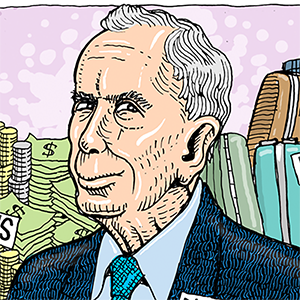From Hashtags to Policy: How Real-World Movements Turn Passion Into Power
Creating effective advocacy for activism is about more than passion -- it's about strategy, collaboration, and persistence. In a world facing issues from climate change to racial injustice, successful activism requires both a clear vision and a plan to turn that vision into reality.
Effective advocacy begins with a deep understanding of the issue you care about. Look at movements such as Fridays for Future, started by Swedish activist Greta Thunberg. What made her advocacy powerful wasn't just her emotional appeal but her grasp of climate science. By using data to back her claims, Thunberg made world leaders acknowledge the severity of climate change. Whether you're fighting for affordable housing in your city or advocating for gun control, having a strong foundation of knowledge gives you credibility and a clear direction, empowering you to make a difference.
When crafting advocacy, focus on specific, actionable demands. For example, if you're advocating for better public schools, push for something concrete such as increased funding for teacher salaries or more mental health resources for students. Measurable goals guide your efforts and make it easier for others to rally behind you.
Advocacy gains strength in numbers. Consider how the Fight for $15 campaign, advocating for a $15 minimum wage, brought together fast-food workers, unions, and progressive politicians. The movement amplified its voice by building alliances with different groups and pressured policymakers to take action.
Coalition-building doesn't mean you must agree on everything; it means finding common ground on the issues you care about. If you're pushing for environmental justice, partner with local Indigenous leaders, conservation organizations, and community groups. Diverse coalitions reflect broader societal interests and can appeal to wider audiences.
Statistics and research are important, but advocacy comes alive through stories. Consider how the #MeToo movement spread like wildfire. It wasn't just facts about workplace harassment that captured attention; it was the countless personal stories that highlighted how widespread and devastating sexual harassment was. Similarly, if you're advocating for health care reform, share the stories of families who can't afford life-saving treatments. Those stories echo in nearly every family, fostering a sense of connection and empathy among your audience.
Social media has revolutionized how activists engage people. The Sunrise Movement, a youth-led climate organization, has effectively used platforms such as Twitter, TikTok, and Instagram to mobilize supporters and pressure politicians. Their viral sit-ins in congressional offices, calling for the Green New Deal, showed how online organizing can translate into real-world action. However, digital advocacy is most effective when it's paired with offline efforts. Use social media to spread awareness, but also organize in-person rallies, meetups, or town halls to turn online momentum into tangible action.
Advocacy takes time. Consider the long struggle for marriage equality in the U.S., culminating in the 2015 Supreme Court ruling in Obergefell v. Hodges. Decades of activism, setbacks, and restrategizing paved the way for this victory. Advocacy isn't always linear. It'll encounter obstacles and even setbacks, but it's the persistence and commitment of advocates that ultimately lead to change.
Ultimately, advocacy aims to change policies. Grassroots efforts are crucial but must connect to policymakers to achieve lasting change. The success of the No DAPL (Dakota Access Pipeline) protests in raising awareness was partly due to activists' engagement with politicians and government agencies. They combined on-the-ground action with legal battles and meetings with decision-makers. Whether you're working locally or nationally, direct engagement with those in power -- through lobbying, public testimony, or letter-writing campaigns -- turns advocacy into policy.
By learning from movements like #MeToo, the Sunrise Movement, and Fight for $15, we can create effective advocacy that blends education, coalition-building, storytelling, persistence, and direct political engagement to build the change we want to see.
========
Cassie McClure is a writer, millennial, and unapologetic fan of the Oxford comma. She can be contacted at cassie@mcclurepublications.com. To find out more about Cassie McClure and read features by other Creators Syndicate writers and cartoonists, visit the Creators Syndicate website at www.creators.com.
Copyright 2024 Creators Syndicate Inc.














Comments